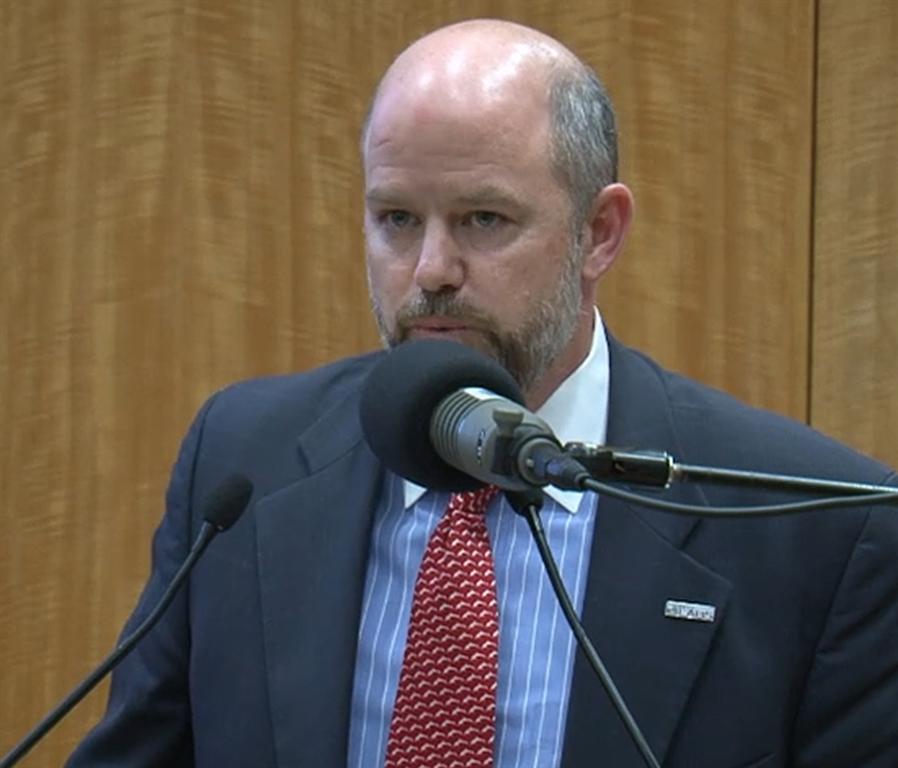Mobile DTV Marches On

Sam Matheny, vice president of Capitol Broadcasting, discussed WRAL’s experience with mobile TV.
WASHINGTON—The National Association of Broadcasters and the National Academy of Television Arts and Sciences teamed up on a presentation on mobile DTV this week. The conversation ranged from the business case for mobile TV to the response that broadcasters are getting from their current experiments with the technology.
The session was kicked off by Rick Kaplan, executive vice president of strategic planning for the NAB, who pointed out that mobile TV is already operating on many broadcast stations and is available across most of the United States. Kaplan introduced the three panelists for the webcast, who each gave a presentation before accepting questions as a group from the local audience and Web viewers.
Rick Ducey, managing director of BIA/Kelsey, a marketing analysis company that focuses on broadcasters and local media, pointed out the obvious: The traditional broadcast model of TV viewing is being disrupted by viewing on a variety of new platforms. However, he dangled a silver lining inside what many perceive as a dark cloud over broadcasters.
“Adding more viewing options creates more overall viewing, and therefore more available video ad opportunities,” he said.
Displaying graphics that showed the current and future fragmentation of the viewing audience, Ducey made the point that broadcasters who step up to mobile broadcasting can create new revenue streams from viewers watching mobile TV.
“TV viewing is being disrupted [by these new distribution channels],” he said, “but it’s an exciting part of video distribution.”
HIGH QUALITY, SIMPLE ACCESS
Salil Dalvi, co-general manager for the mobile content venture Dyle TV, explained that consumers need to understand that mobile TV is a way to view high-quality content on their mobile devices without eating into their limited mobile data plans. He thinks that consumers want simple access to mobile TV, and the key to mobile TV’s growth is to reinforce the message that the content is free and doesn’t use any carrier data.
“In the past, it’s been a ‘gee whiz’ sort of thing to get mobile TV on a cellphone,” Dalvi said. “But consumers see this as an app and not a device.”
Last to speak was Sam Matheny, vice president for Capitol Broadcasting and owner of pioneering TV station WRAL, among others. WRAL has been delivering mobile TV for several years, and has perhaps more experience with mobile TV than any other broadcaster.
“Now is not the time to stand still,” Matheny said. “Mobile and broadcasting go together.”
WRAL’s experience is that most consumers who have mobile capability enjoy and use it. Their biggest complaints are that there’s not enough content and that the battery life is limited.
Matheny’s bottom line was that mobile video is a $45 billion business today (including wireless data providers) and that number is only going to grow.
“We have the potential go behind the curve if we stand still,” Matheny said.
Wrapping up the presentation, Dalvi pointed out that it’s still early in the rollout and marketing of mobile TV services and that a possibly critical step in the process — getting receiver chips installed in cellphones — will most likely happen at some point.
“We’re in the first inning of this game,” he said. “I think we’ll see receiver chips in these devices.”
The professional video industry's #1 source for news, trends and product and tech information. Sign up below.
Bob Kovacs is the former Technology Editor for TV Tech and editor of Government Video. He is a long-time video engineer and writer, who now works as a video producer for a government agency. In 2020, Kovacs won several awards as the editor and co-producer of the short film "Rendezvous."

